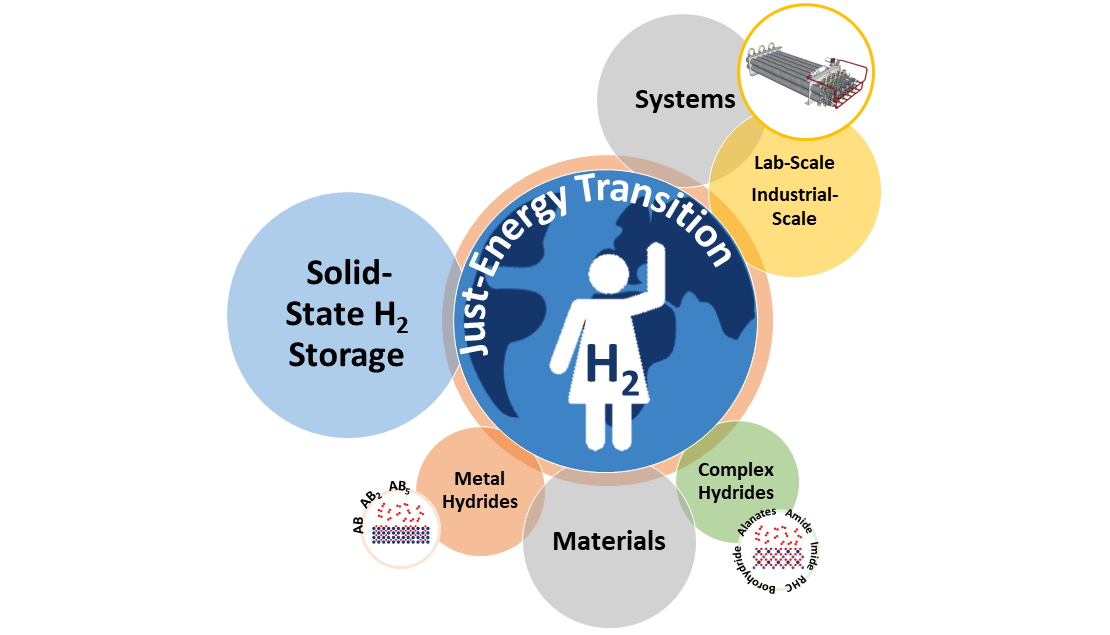Preprint
Review
Solid-State Hydrogen Storage: Materials, Systems and the Relevance of a Gender Perspective
Altmetrics
Downloads
1282
Views
961
Comments
0
A peer-reviewed article of this preprint also exists.
This version is not peer-reviewed
Submitted:
24 June 2021
Posted:
25 June 2021
You are already at the latest version
Alerts
Abstract
This paper aims at addressing the exploitation of solid-state carriers for hydrogen storage, with attention paid both to the technical aspects, through a wide review of the available integrated systems, and to the social aspects, through a preliminary overview of the connected impacts from a gender perspective. As for the technical perspective, carriers to be used for solid-state hydrogen storage for various applications can be classified into two classes: metal and complex hydrides. Related crystal structures and corresponding hydrogen sorption properties are reviewed and discussed. Fundamentals of thermodynamics of hydrogen sorption evidences the key role of the enthalpy of reaction, which determines the operating conditions (i.e. temperatures and pressures). In addition, it rules the heat to be removed from the tank during hydrogen absorption and to be delivered to the tank during hydrogen desorption. Suitable values for the enthalpy of hydrogen sorption reaction for operating conditions close to ambient (i.e. room temperature and 1-10 bar of hydrogen) are close to 30 kJ·molH2 1. The kinetics of hydrogen sorption reaction is strongly related to the microstructure and to the morphology (i.e. loose powder or pellets) of the carriers. Usually, kinetics of hydrogen sorption reaction is rather fast, and the thermal management of the tank is the rate determining step of the processes. As for the social perspective, various scenarios for the applications in different socio-economic contexts of solid-state hydrogen storage technologies are described. As it occurs with the exploitation of other renewables innovative technologies, a wide consideration of the social factors connected to these processes is needed to assess the extent to which a specific innovation might produce positive or negative impacts in the recipient socio-economic system and to explore the potential role of the social components and dynamics in fostering the diffusion of the innovation itself. Attention has been addressed to the gender perspective, in view of the enhancement of hydrogen-related energy storage systems, intended both in terms of the role of women in triggering the exploitation of hydrogen-based storage as well as to the impact of this innovation in their current conditions, at work and in daily life.

Keywords:
Subject: Chemistry and Materials Science - Biomaterials
Copyright: This open access article is published under a Creative Commons CC BY 4.0 license, which permit the free download, distribution, and reuse, provided that the author and preprint are cited in any reuse.
MDPI Initiatives
Important Links
© 2024 MDPI (Basel, Switzerland) unless otherwise stated







